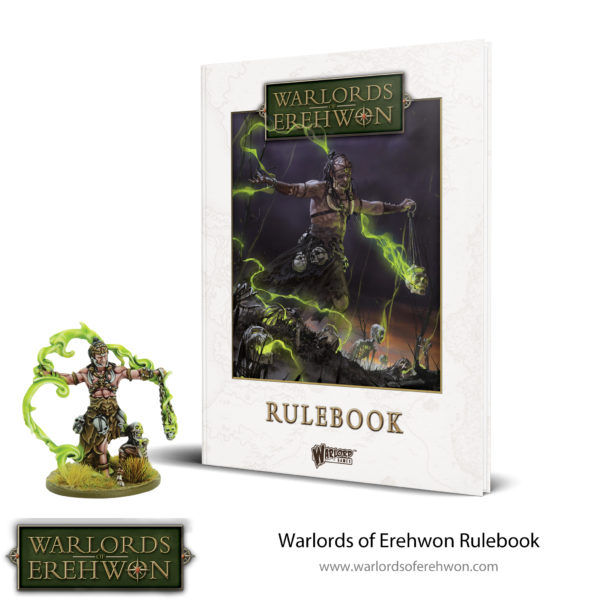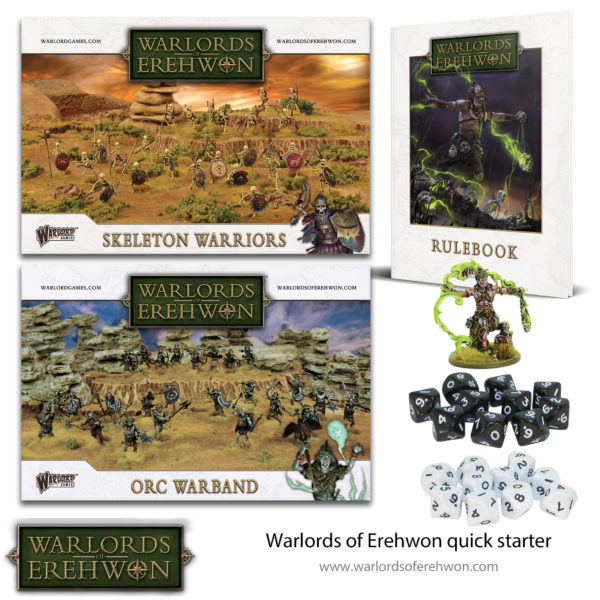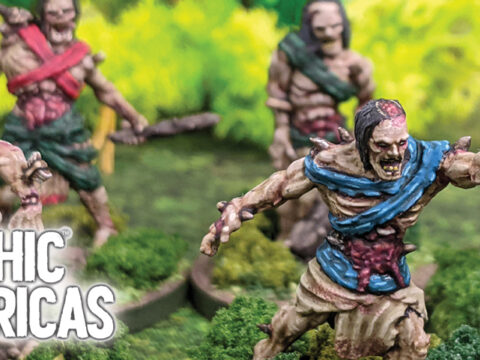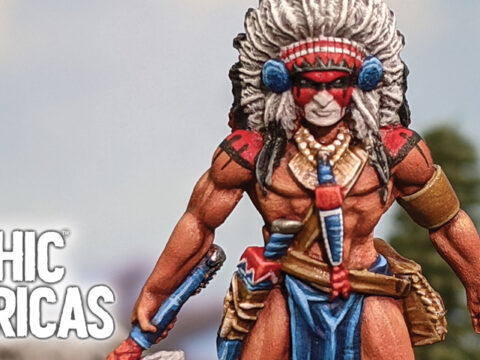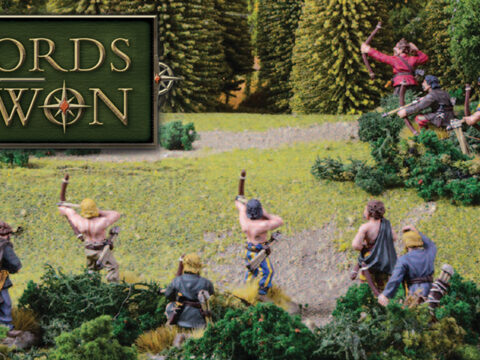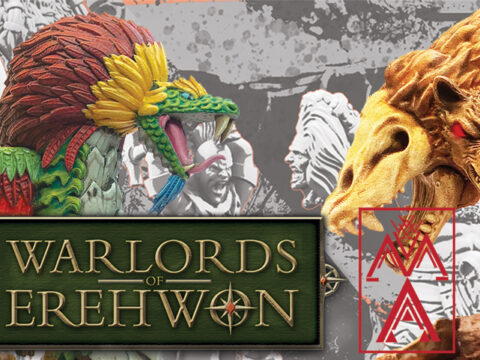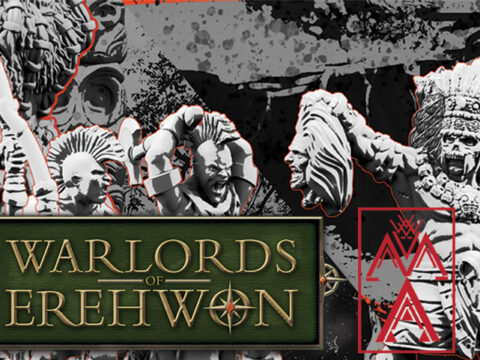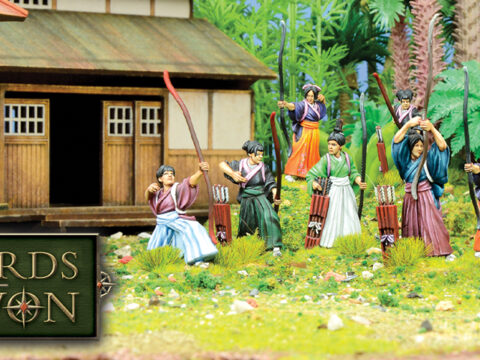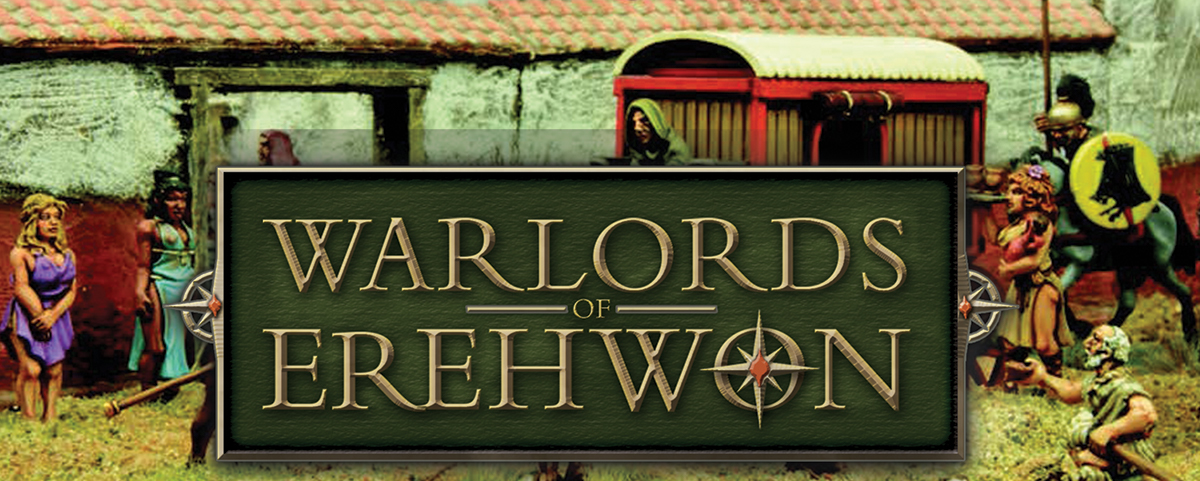
Yes I know… Romans are not what you’d call a figment of the imagination. So, what are they doing here you might well ask? Well, Warlords of Erehwon aims to encompass the whole realm of myth and folklore as well as pure fantasy, which naturally leads us to classical subjects and historical mythology. This list is based on the age of the Roman legions, which we’ll acknowledge as lasting from the time of Augustus to the mid-third century. In other words, we are talking about Romans as they are commonly portrayed and understood in film, TV, etc.
This list is not strictly ‘historical’ in so far as I’ve constructed it to represent a warband as defined in the game. However, it uses historical troop types wielding historical weapons, and we will have to simply imagine how such a body of men has come about. Perhaps they are refugees from some disaster: the remnants of the 9th Legion fleeing the wrath of the Iceni Queen, or a band of survivors from the sorry defeat of Crassus at the hands of the Parthians. Maybe they are a small force dispatched to raid beyond the frontier, rescue Roman captives, or detail some trouble-making tribal chief.
Either way, I have taken the liberty of adding a Haruspex to turn the ‘historical’ warband into a fantasy one, should players wish to do so. I’ve also added gladiators and a few other romantic elements. Gladiators did actually take to the field on at least one occasion, but that was rather the exception. Anyone wishing to play a more accurately historical game can ignore such things. I’m sure that anyone who has a yen to field Romans will be familiar enough with the subject to dispense with the usual Erehwonian summary of their place in literature, popular culture and history.
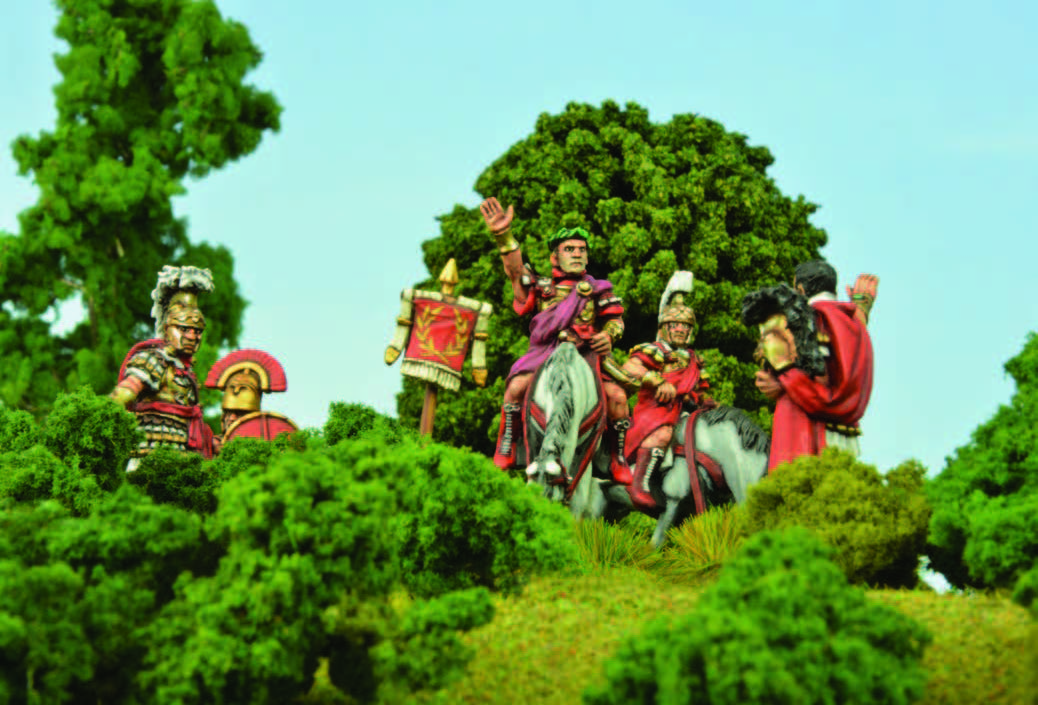
If we choose to take our examples from history, then we already know what we are about and I shall spare you a potted history of the Julio-Claudian dynasty and its successors. If, on the other hand, our motivation comes from such sources as The Life of Bryan, Carry On Cleo, and Gladiator, then we are already primed with all we need to know. So, step forward Biggus Dickus… the mighty Hengist Pod by your side … and titter ye not Lurkio… the Romans are here.
The Roman Warband
Our list includes a Centurion in the role of Warlord to head-up our gallant Romans. He might equally well be a senior officer of the senatorial class, a legate (Legates Legionis – who commanded a legion), tribune (Tribunus Laticlavius – his second in command), or equestrian tribune (staff officiers). Or he could be another character who finds himself in charge of your warband, perhaps a former soldier turned settler, maybe a rebel leader unfortunate to choose the wrong side in the Year of Four Emperors.
Our hero is more likely to be one of the senior Centurions or perhaps a battle-hardened veteran. Alternatively, he might have learned his fighting prowess as a private bodyguard or even a gladiator, but whatever his story we present him armed and armoured as we might expect a Roman officer to be. We’ve also allowed for our hero to ride a chariot, not a strictly historical option for a military force, but our hero has plainly seen the right movies.
The Haruspex may be imagined as the Priest of one or other of the many Roman cults that were popular with soldiers. Although the presence of a magic-wielding sorcerer is entirely fictional, the ancients believed in all kinds of magics and eagerly sought the omens before engaging in battle. We give our chap the usual choice of hangers-on, either mortal or spiritual, and leave it to players to fix upon suitable models for the latter.
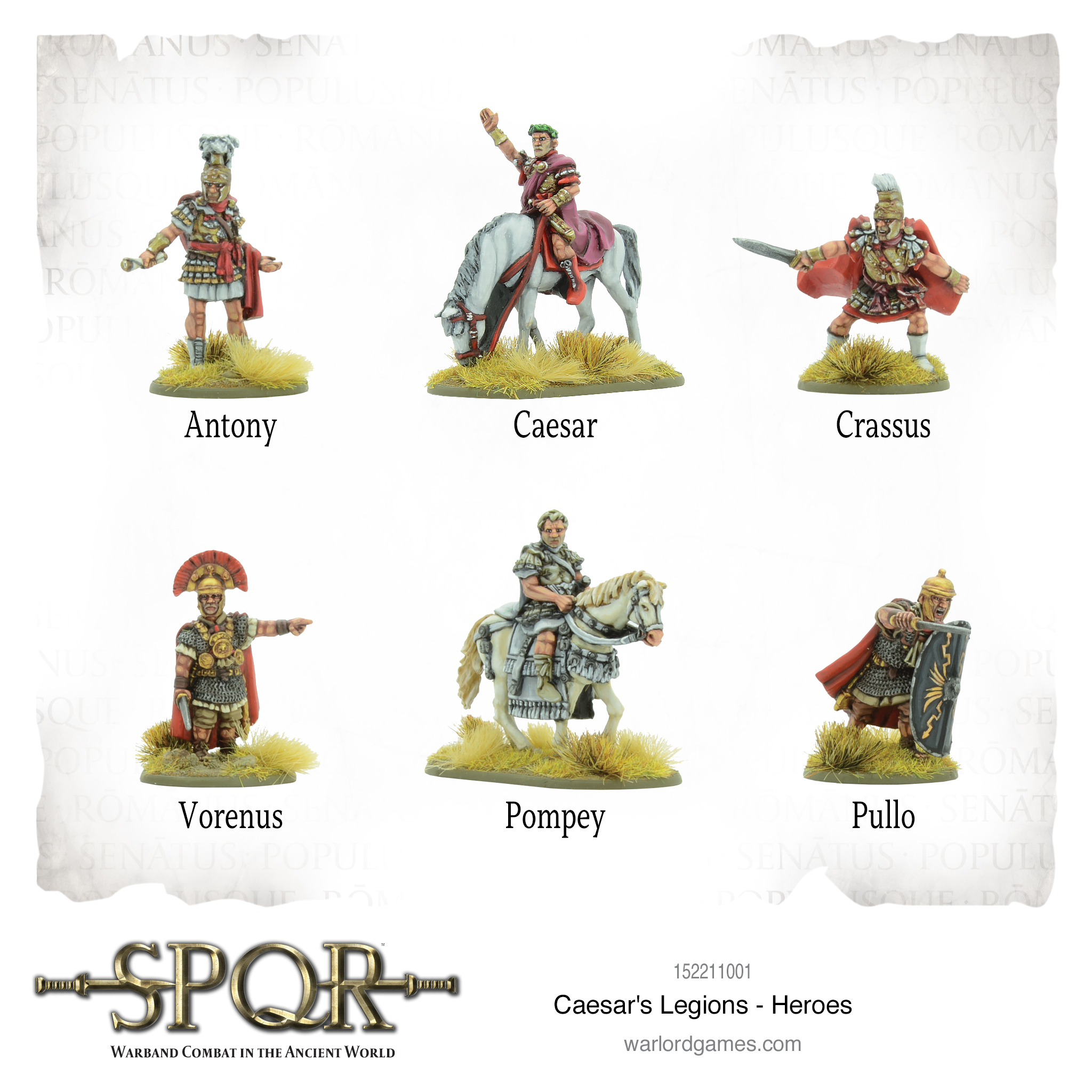
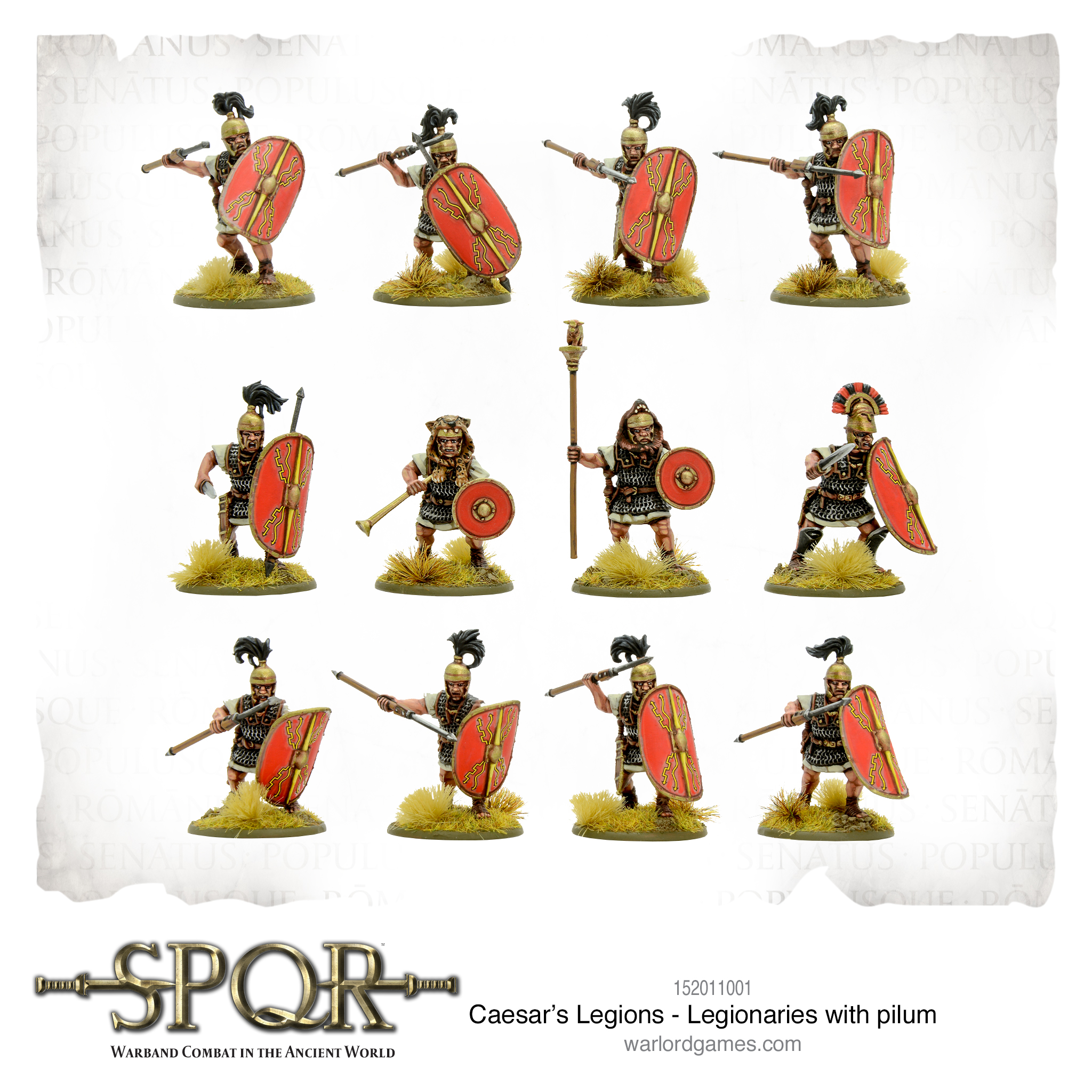
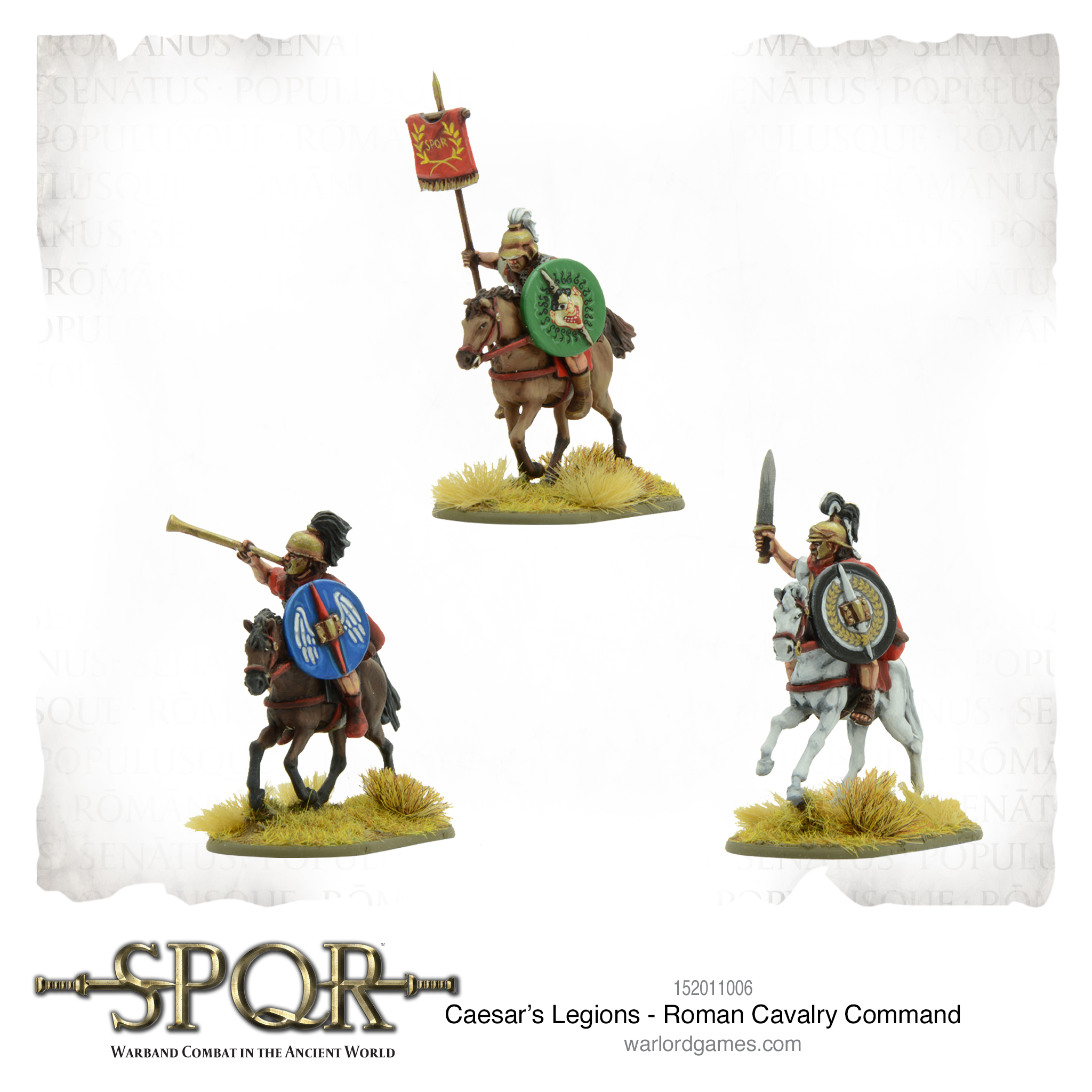
Legionaries are represented in different guises to allow us to field our typical fighting men as well as veterans, heavily armoured troops, or work parties armed with the dolabra. Heavy legionaries are equipped with segmented manica to protect their sword arms, reinforced helmets and shoulder armour, and possibly with greaves as well. They were prominent during the time of Trajan’s Dacian wars and their armour may have been developed to counter the fearsome double-handed falx of the Dacians (equivalent to a big axe).
Legionaries formed into work parties would wear their armour if they suspected trouble, keeping helmets and shields at hand. Hence I have allowed for lighter armour and an upgrade. I’ve armed them with the ubiquitous work-tool, the pick-axe-like ‘dolabra’ (big axe equivalent) as useful for hewing bone and piercing armour as for chopping wood and breaking stone.
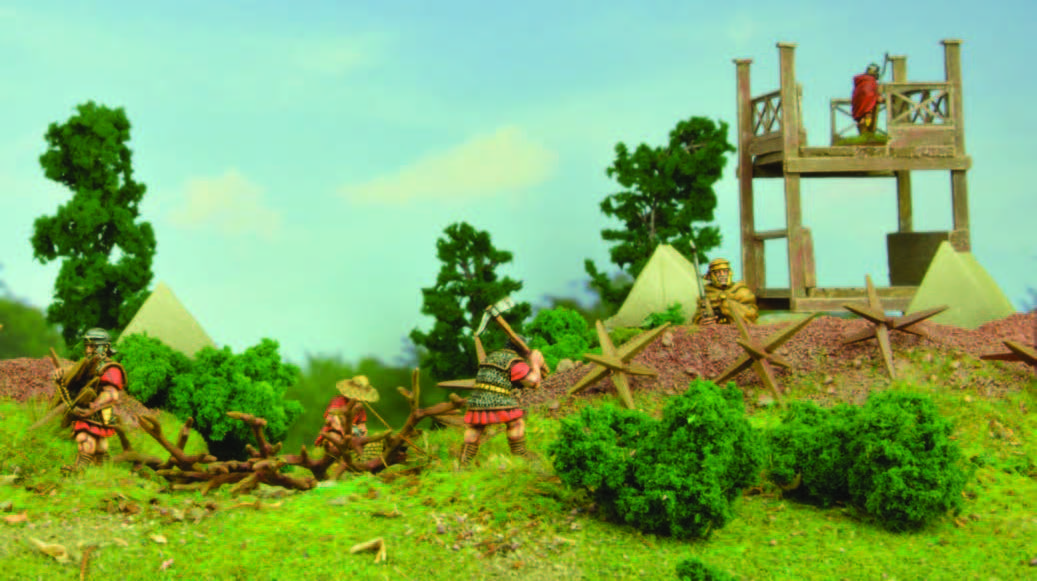
Auxiliaries provide further infantry options in what is fundamentally an infantry-based warband. Unarmoured and lightly armoured missile troops take the form of slingers, archers and javelinmen. Our typical Auxiliary trooper wears a mail coat and a helmet, and he bears a shield and spear. In fact, he is as well-armoured as a legionary, even if he does not enjoy the same status: legionaries were Roman citizens – auxiliaries could earn citizenship by military service and this was one reason locals signed up.
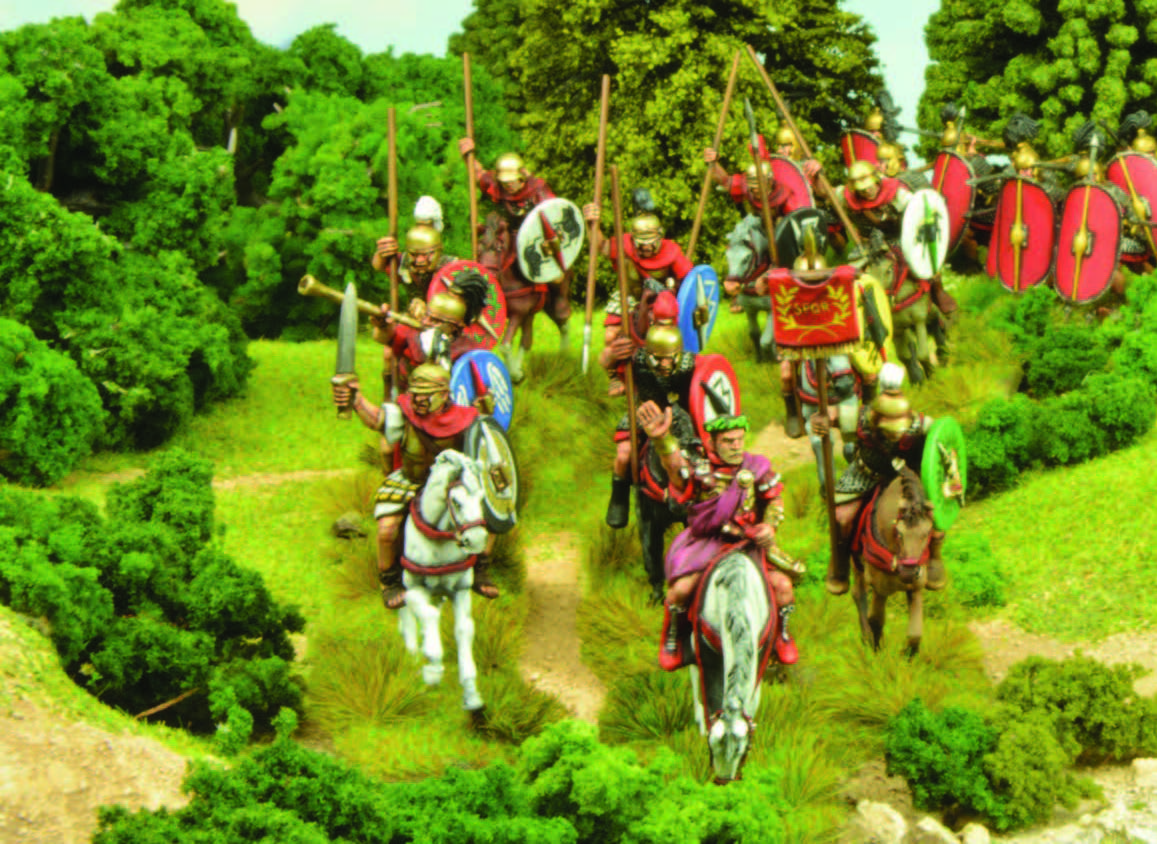
Although one does not immediately think of cavalry when Romans are mentioned, their army included mounted units, which were called Alae or ‘wings’. Alae were divided into Turmae – a Turma being roughly a squadron of 32 men. I’ve tried to represent a variety of historical cavalry types, although not all types would necessarily serve across the whole of the Roman Empire.
The most common kind of cavalry are Auxiliary cavalry equipped with a number of spears both to throw or thrust. A few units were equipped with a longer spear called the Contos, that was held in two hands. This type of long lance was probably inspired by Sarmatian cavalry encountered by Romans during the wars against the Dacians in what is modern Romania. I’ve added this option as a lance along with the option to carry swords.
Other cavalry units were equipped with heavier armour and some were designated as Cataphractarii or Clibanarii. It’s not clear what the difference between these is – or even if there is any – but I’ve followed the suggestion that Clibararii were armed in a more eastern tradition and carried bows.
Gladiators give us an unusual fighting unit. The most heavily armoured have been given the slow rule, as well as the usual penalties, to represent the lumbering armour of the most heavily armoured gladiators. This has loose historical precedence and plenty of support from the movies and literature, ‘Ave Imperator, morituri te salutant!’
Our Roman warband is favoured with artillery options in the form of the familiar Scorpion bolt-throwing engine and stone throwing Ballista.
Warlords of Erehwon
